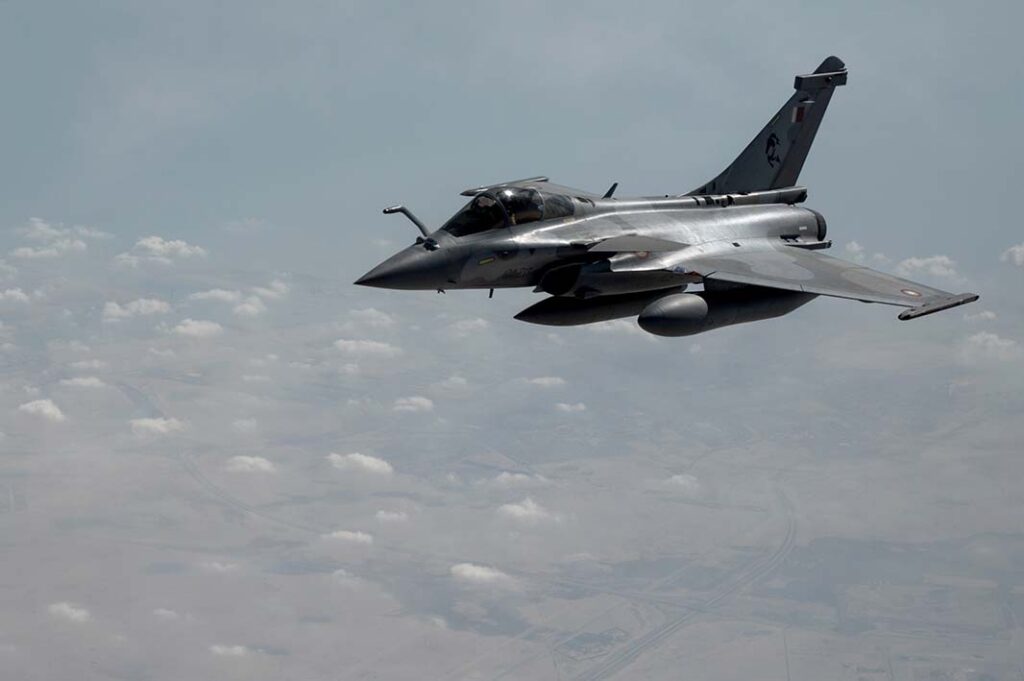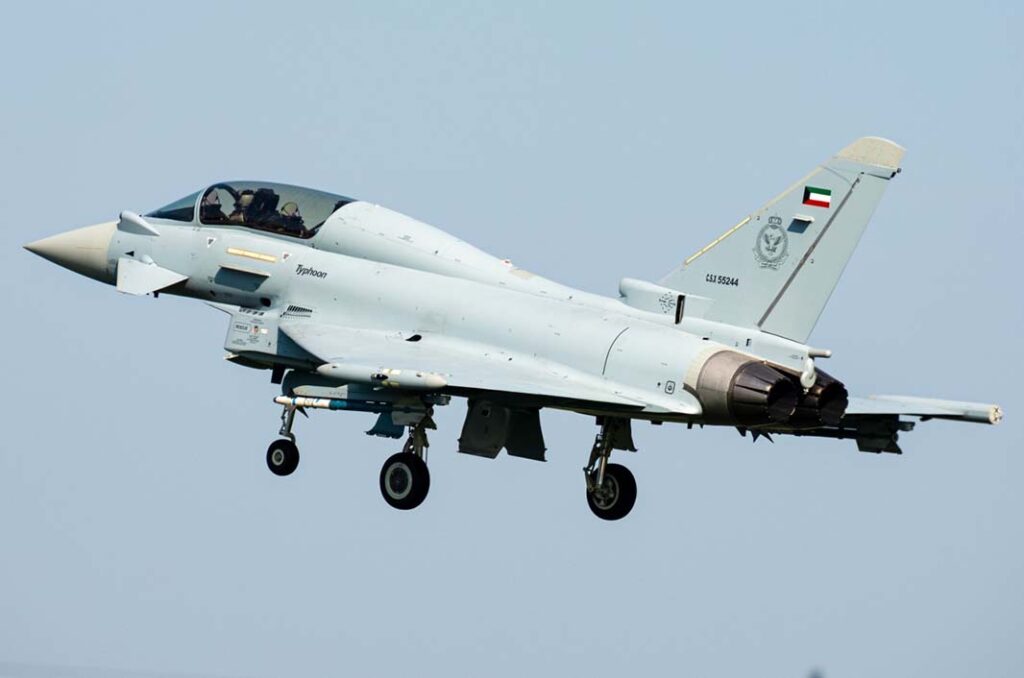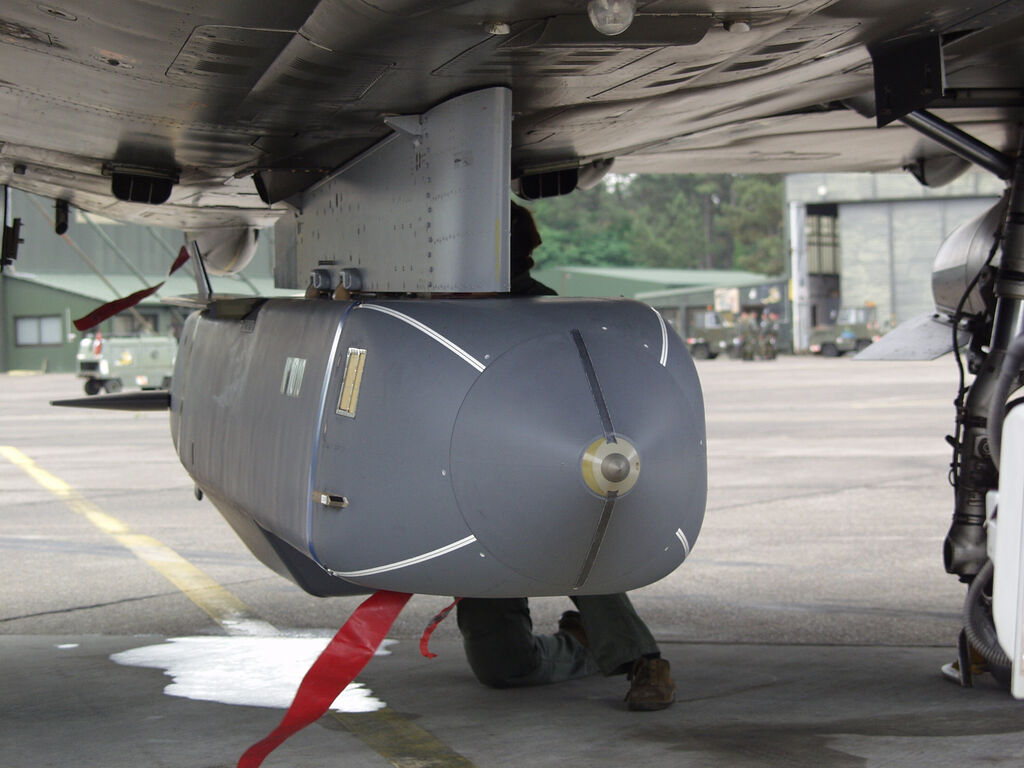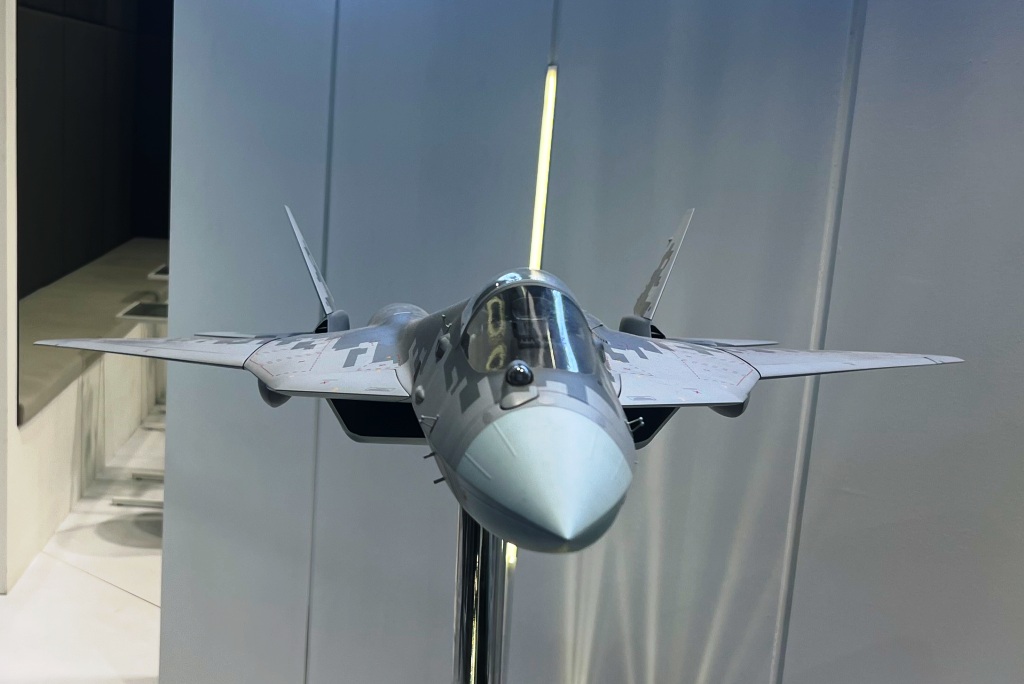The skies over the Middle East tell a story of dramatic transformation: Iran’s once-powerful air force is a shadow of its former self, while Syria’s capability has been destroyed, yet Gulf states are acquiring hundreds of advanced Western fighters. This piece charts the changing aerial order of battle in the Middle East over the decades.
This piece on Middle East Air Force combat aircraft capabilities will primarily be focused on the air forces in the Arab Gulf, with reference to other air forces in the region. If there is one area of the world where the importance of airpower is understood, it is here, due to previous and ongoing combat operations. This is also a region where some air forces with significant (at least on paper) combat capabilities have been swept aside or severely diminished.
Diminished forces
Iran
A textbook example of decline can be seen in the air force of Iran. Prior to the 1979 Iranian Revolution, the Imperial Iranian Air Force (IIAF) was one of the most powerful in the region. Primarily equipped with US-supplied aircraft, it could boast a combat aircraft fleet of Grumman F-14 Tomcat, McDonnell Douglas F-4 Phantom and Northrop F-5 aircraft. After the Revolution, the supply of spares for these US aircraft was halted. Then came the Iran-Iraq War lasting from September 1980 to August 1988, imposing attrition on what was now known as the Islamic Republic of Iran Air Force (IRIAF).
During the Iran-Iraq War, the IRIAF was forced to acquire spares from whoever was prepared to sell or buy from the black market; they also took steps to invigorate domestic aerospace production and overhaul capabilities. They did in fact manage to acquire some Chinese F-7/FT-7 aircraft, but primarily it was a matter of attempting to sustain what they had. New capability came from an unexpected source as the Iraqi Air Force flew 137 combat aircraft to Iran during the first Gulf War (1990/1991) in an effort to preserve capability. IRIAF received Mirage F1EQ/BQ, MiG-23BN/ML/UM, MiG-29A/UB, Su-20, Su-22M2/M3/M4 and Su-24 K/UBK combat aircraft from Iraq. In 2014, some of these aircraft would be returned to Iraq. Iran would later receive MiG-29 and Su-24 spares from Russia allowing it to build a limited operational capability with these aircraft.
The IRIAF would make efforts to acquire more modern combat aircraft, for example the Sukhoi Su-30 and later the Su-35 from Russia and, reportedly, the Chengdu J-10 from China, all with zero result. This presented them with a strategic dilemma, as they could not expect to defend Iranian airspace from a competent adversary equipped with modern combat aircraft. What they could do was build an extensive ground-based air defence (GBAD) system utilising indigenous, Russian, including the S-300P series, and Chinese missile systems and technology. Not a perfect ground-based air defence solution, but one assumed to provide enough of an obstacle.
For Iran, their deterrent was based on their extensive missile and drone capability, able to engage targets across the Middle East and beyond. The idea was very simple, who would risk targeting Iran if they knew they could potentially be overwhelmed by a massive missile and drone response? In October 2024, the Israel Air Force (IAF) attacked Iran, targeting air defence batteries, UAV and missile production sites. Iran had struck Israel in April and October 2024 without much success, consequently its ability to deter attacks had become diminished.
Then in June 2025 the IAF returned to the skies of Iran, after its October 2024 missions had succeeded in weakening Iranian air defences, providing freedom of action which was later exploited in June 2025. Iranian command and control (C2) facilities, a broad selection of military targets, missile installations and nuclear centres were all hit. Then, later in the month, the US Air Force entered the fray, targeting key Iranian nuclear sites and inflicting heavy damage. Iranian defensive capabilities failed to deter either and Iran’s offensive response yielded minor results at best.
The dire state of Iran’s air force does appear to be in the process of being remedied somewhat. According to leaked Russian documents which surfaced in October 2025, Iran has ordered 48 Su-35 aircraft. While these would indeed provide a noteworthy boost to Iran’s capabilities, given Russia’s current industrial pressures stemming from its War with Ukraine, it remains uncertain when these would be delivered.

Syria
There is another air force that has been removed from the regional scene, namely the Syrian Arab Air Force (SAAF). Once, on paper at least, it was one of the most powerful air forces in the region. Soviet-equipped, they operated MiG-21, MiG-23, MiG-29, Su-22 and Su-24 combat aircraft. Plans for force modernisation came to a halt with the end of Soviet military aid in 1989 and the subsequent collapse of the Soviet Union. The SAAF then found itself dealing with a lack of funding and shortage of spares into the 2000s. Reportedly in 2008, Syria acquired MiG-23ML/UB aircraft from Belarus in a commercial transaction, but by then new possibilities were emerging to acquire foreign support.
Russia had become more focused on the Mediterranean and looked to upgrade the former Soviet naval base at Tartus in Syria in 2009 to support its activities in the area; as a result it became more partial to assisting Syria with spares and discussing new aircraft purchases. Then in 2011, the Syrian Civil War broke out and the Assad regime was fighting for survival. The optics for Russia of supplying combat aircraft to Syria in the midst of a civil war were negative, so no new aircraft arrived, but spares and air weapons did. In 2015, the picture changed, as Russia started a military intervention to support Assad, followed in 2017 by the signature of a 49-year lease agreement covering Russian use of Tartus.
In early December 2024, the Assad regime collapsed in the face of jihadist and Turkish-backed militia attacks. Soon after, the IAF attacked SAAF bases in an effort to destroy advanced combat aircraft to remove the potential air threat from the new Syrian regime; systems destroyed include MiG-23, MiG-29, Su-22 and Su-24 aircraft. 2025 has seen the new Syrian government attempt to restore an aviation capability, initially attempting to return SAAF helicopters to operational status. There are also some Aero L-39 jet trainers that could be returned to service, if the Czech government was open to supplying spares. However, attempting to resurrect surviving SAAF Soviet/Russian combat aircraft is unlikely, unless relations with Russia resumed. At this point, the future of a new Syrian Air Force seems likely to be based on assistance from Türkiye.
Yemen
Another air force that has effectively vanished is that of Yemen, hardly surprising as a civil war has been raging in that country since September 2014 and continues today. Up until May 1990 there were two Yemeni states, North Yemen and South Yemen, both of which had air forces, one predominantly Western-equipped and the other with Soviet-era equipment. In May 1990, unification into a single state of Yemen and merger to create a single national air force was supposed to take place. However, not long afterwards a civil war broke out, which lasted from May to July 1994. After which unification went ahead.
Then came the decision by the Yemeni government to tackle al-Qaeda groups in Yemen in 1998; after that, from mid-2004 the government decided to confront the Houthis, an anti-government tribal force. Prior to this, the Yemeni Air Force had managed to acquire some new aircraft, to add to the MiG-21s, F-5Es, MiG-29s and Su-22s that it had in service. Some MiG-29s were acquired from Kazakhstan and some Sukhois from Ukraine; a deal was then signed with Russia to acquire 14 MiG-29s and a single MiG-29UB. Later military assistance was received from the US, including the supply of 14 F-5E aircraft.
In the midst of all of this Yemen started to fall apart, governments fell and conflict with the Houthis and others continued; eventually the Houthis toppled the legitimate government, triggering the start of the current civil war. The Yemeni Air Force split, some elements supporting the Houthis, as the civil war grew in intensity. In March 2015, a Saudi-led coalition of Arab States intervened in the Yemen conflict in support of the internationally-recognised government, as a part of the intervention bases housing Houthi supporting Yemeni Air Force aircraft were neutralised. Since then, the rest of the Yemeni Air Force has effectively ceased to exist as a functional entity, its future depending on when, and if, Yemen becomes a functional unified state once more.
Royal Bahraini Air Force
The Royal Bahraini Air Force (RBAF) acquired its first serious combat aircraft from the US in the 1980s, in the shape of eight Northrop F-5E and four F-5F aircraft that were delivered between 1985 and 1987. The F-5E/F purchase was seen as the basis for the RBAF to acquire a more advanced combat aircraft solution at a later date. Potential options from the US, France, the UK, and even Russia were investigated, before it was decided to opt for the F-16.

In March 1987, the Peace Crown I Foreign Military Sales (FMS) contract was signed covering the acquisition of eight Lockheed Martin F-16C Block 40 and four F-16D Block 40 aircraft, with the first four aircraft arriving in Bahrain in May 1990. A second acquisition, the Peace Crown II programme was signed in February 1998; this covered the procurement of ten more F-16C Block 40 aircraft, which were delivered in 2000.
The next phase in RBAF development came in 2017 when Bahrain became the first customer for new-build F-16 Block 70 aircraft, ordering 16 examples. The F-16 Block 70 features a Northrop Grumman APG-83 AESA radar, improved avionics and cockpit, extended range via conformal fuel tankage, higher performance engine and an increased 12,000 hour structural service life. The first ferry flight of three F-16 Block 70 aircraft for Bahrain left the Lockheed Martin facility at Greenville, South Carolina, on 6 March 2024. Apart from new build Block 70 aircraft, the existing RBAF fleet of F-16C/D Block 40 aircraft will be upgraded to the Block 70 configuration.
Qatar seeks variety
The Qatar Emiri Air Force (QEAF) turned to Dassault for its first true combat aircraft, acquiring 12 Mirage F1EDAs and two Mirage F1DDAs, with all aircraft delivered between 1983 and 1984. Subsequently, an additional single Mirage F1DDA aircraft was acquired from France. Eventually these aircraft would be sold on to Spain. The next step for the QEAF was a more advanced combat aircraft and once again this saw them turn to France and Dassault. In 1994, they ordered nine Mirage 2000-5EDA and three Mirage 2000-5DDA aircraft, as well as a significant air weapons package, with deliveries starting in 1997.
The QEAF Mirage 2000-5 fleet was never extensively utilised and was put into storage, and at that point it appeared that the QEAF intended to give up its combat capability. Indeed, efforts were made to sell the Mirage 2000-5 fleet, with Pakistan seen as a likely buyer. Efforts were later made to interest India, a Mirage 2000 operator, though these sales efforts failed, leading to the Mirage 2000-5 fleet being rehabilitated and put back into QEAF service.
By this point the QEAF was gaining new momentum in Qatari defence planning. Equally important was the fact that they were looking to expand their supplier base and were open to offers from non-traditional sources. Despite that, in 2014 Qatar was negotiating for a Dassault Rafale purchase; up to this point Rafale had achieved no export sales, but at this moment Dassault appeared to be closing in on their first Rafale export deals, with Egypt and Qatar as customers. In February 2015 Egypt ordered 24 Rafale aircraft, with Qatar following in April 2015, by announcing its intention to order 24 Rafale DQ/EQs with an option on a further 12 aircraft,. In December 2017, Qatar took up the option for an additional 12 Rafale DQ/EQs. The Rafale represents the third generation of Dassault combat aircraft operated by the QEAF, meaning that Qatar was perfectly familiar with the structures for operation, maintenance and support of French combat aircraft; therefore the decision on Rafale acquisition was quite logical.

After this point the QEAF combat aircraft story suddenly becomes much more complex. In 2016, it became apparent that Qatar was in discussion with the US over the acquisition of an advanced Boeing F-15 derivative. This was the F-15QA and initially the idea was a purchase of 36 aircraft with an option on a further 36. What transpired was a contract signature in late 2016 that would eventually cover the acquisition of 48 F-15QA aircraft with 24 more on option. Bear in mind only a few years earlier the QEAF only operated 12 Mirage 2000-5 aircraft, and it was now building up to 36 Rafale and 48 F-15QA aircraft meaning it would need a minimum of 84 qualified fast jet pilots and 48 weapon system operators (WSO) for the F-15QA fleet, added to which a substantial number of maintenance and support personnel would be required, all in all a most challenging task.
There is no doubt that the F-15QA is a highly capable aircraft, but operating a US aircraft requires a totally different sustainment infrastructure than a French aircraft; operating French and US systems in parallel though is incredibly complex. Qatar might be a small country, but it is incredibly rich and is prepared to invest in its defence forces. However, it also realises that it needs additional insurance to secure its defence, hence the presence of a massive US base in Qatar at Al Udeid; and there is also a Turkish military base in Qatar. Spending money on US defence systems and hosting a US base in theory solidifies the relationship between Qatar and the US and serves as a form of deterrent – though since Israel’s 9 September 2025 air strike on Doha, this view has come under strain.
The QEAF added even more complexity to its combat aircraft ORBAT with the September 2017 order for 24 Eurofighter Typhoon aircraft from the UK; this was followed up in December 2024 with an order for an additional 12 aircraft. While there are elements of air weapons commonality between the Typhoon and the F-15QA, the European aircraft will require a totally different support infrastructure from that of the Rafale and the F-15QA, plus a need for a minimum of 36 more fast jet pilots. Once again though, the acquisition theoretically solidifies ties between Qatar, the UK and Europe. A point to note is that in roughly a decade, the QEAF has grown from 12 combat aircraft to 98, and slated to reach 120 soon.
Kuwait evolves
In 1964, the Kuwait Air Force (KAF) received its first combat aircraft from the UK in the form of the Hawker Hunter; at the end of that decade, it acquired the English Electric Lightning, also from the UK. The Lightning proved to be a disappointment, leading to a decision in 1974 to acquire 18 Dassault Mirage F1CK, nine F1CK-2, two F1BK and four F1BK-2 aircraft. That same year saw the KAF turn to the US for aircraft, ordering 30 McDonnell Douglas A-4KU/TA-4KU Skyhawk attack aircraft.
During the Iraqi invasion of Kuwait in 1990, the KAF, particularly its Skyhawk fleet, flew missions against invading Iraqi forces until their airfields were overrun, after which they withdrew to Saudi Arabia to form the nucleus of the Free Kuwait Air Force. They would then go on to fly missions in support of the liberation of Kuwait. The KAF had been building towards a force modernisation programme prior to the invasion, ordering 32 F/A-18C and eight F/A-18D aircraft, and these would eventually be delivered after the liberation of Kuwait in 1991.

By 2015, the KAF was searching for a replacement for the F/A-18C/D fleet, which came down to a choice between the Eurofighter Typhoon and the Boeing F/A-18E/F; eventually it was announced that Leonardo, operating as the lead Eurofighter contractor for the Kuwait bid would receive an order for 28 Typhoon aircraft. However, the KAF would later go on to place an order for 22 F/A-18E and six F/A-18F aircraft with Boeing. It is understood that the COVID pandemic prevented the delivery of these aircraft to Kuwait and the aircraft remain in the US awaiting delivery instructions from the KAF.
The United Arab Emirates Air Force
The United Arab Emirates Air Force (UAEAF) was created with the merger of the aviation capabilities of Abu Dhabi and Dubai. Prior to that, Abu Dhabi had been the operator of high-end combat aircraft in the form of 12 Dassault Mirage 5AD, 14 Mirage 5 EAD, three Mirage 5RAD and three Mirage 5DAD aircraft. Then in 1983 came an order for 22 Mirage 2000EADs, eight Mirage 2000RADs and six Mirage 2000DADs. The next major combat aircraft order came in 1998, when Dassault received an order for 20 Mirage 2000-9 and 12 Mirage 2000-9D aircraft; in addition, 30 upgrade kits were to be supplied to bring the Mirage 2000EAD/RAD/DAD force up to the Mirage 2000-9 standard.
Even as the UAE was purchasing the Mirage 2000-9, in the background there was a far more ambitious acquisition programme for an advanced combat aircraft to replace their Mirage 5 fleet under discussion. The UAE had looked at proposals from both France and the US, eventually opting to be the launch customer for the Lockheed Martin F-16 Block 60, ordering 55 F-16E and 25 F-16F, along with a major air weapons package. Deliveries took place between 2003 and 2006.

The Mirage 2000-9 and the F-16E/F Block 60 contracts were a major boost to UAEAF capabilities; equally significant was the fact that the UAE had opted to place a major order with the US for combat aircraft, a first for the UAE. With the UAE having a commitment to consistent defence modernisation, the stage was set for a replacement programme for the Mirage 2000 fleet. With requirement figures of 60 to 80 aircraft for this programme, it was an enormous prize that attracted interest from every major combat aircraft manufacturer.
France and Dassault had invested immense time and effort over the years in attempting to persuade the UAE that the Rafale was the optimum solution for its future aircraft needs, though never quite managing to close the deal. Then the US entered the picture, with suggestions that the F-35 could be on offer to the UAE under the first Trump administration. However, the UAE suspended the deal in 2021, reportedly due to frustration over the Biden administration making the sale conditional on the UAE pushing out China’s Huawei from its telecommunications networks. The end result was that in December 2021 France and the UAE signed a EUR 17 billion deal covering the purchase of 80 Dassault Rafale F4 aircraft and 12 helicopters. The first Rafale was delivered to the UAEAF on 29 January 2025. After this, attention shifted to a replacement for the F-16 Block 60 fleet. Could this see a return to F-35 interest?
Saudi solutions
As a major player in the Gulf, a brief look at the Royal Saudi Air Force (RSAF) is warranted. One of the most powerful regional air forces, the RSAF can boast a combat aircraft fleet of some 200 Boeing F-15C/D/S/SA, 72 Eurofighter Typhoon and around 80 Panavia Tornado IDS aircraft. The crux of the matter is whether the RSAF will finally purchase a second batch of 48 Typhoon aircraft to enable the Tornado IDS fleet to be retired? There now seem to be no political obstacles in Europe to a Typhoon sale, though the question is whether the RSAF actually still sees a need for a Tornado replacement in the near term?

France and Dassault have been trying to penetrate the RSAF combat aircraft market for years and would no doubt be delighted to action a Rafale sale. Equally, the US would be happy if it could direct Saudi money towards a US programme. For the UK and BAE Systems, extending their long-term relationship with Saudi is a must. Saudi government policy is to build indigenous technological and industrial capabilities within Saudi Arabia, with aerospace seen as an important high-technology area. Hence Saudi interest in the future Global Combat Air Programme (GCAP).
The three current GCAP partner nations, the UK, Italy and Japan would have to jointly agree to Saudi participation in GCAP and then define a structure for such participation. Previously there seemed to be discord between the partners on potential Saudi involvement, though this seems to have abated. Conceivably then, the future of the RSAF will rest on the GCAP programme with Saudi Arabia being an industrial and financial partner in the programme.
David Saw



